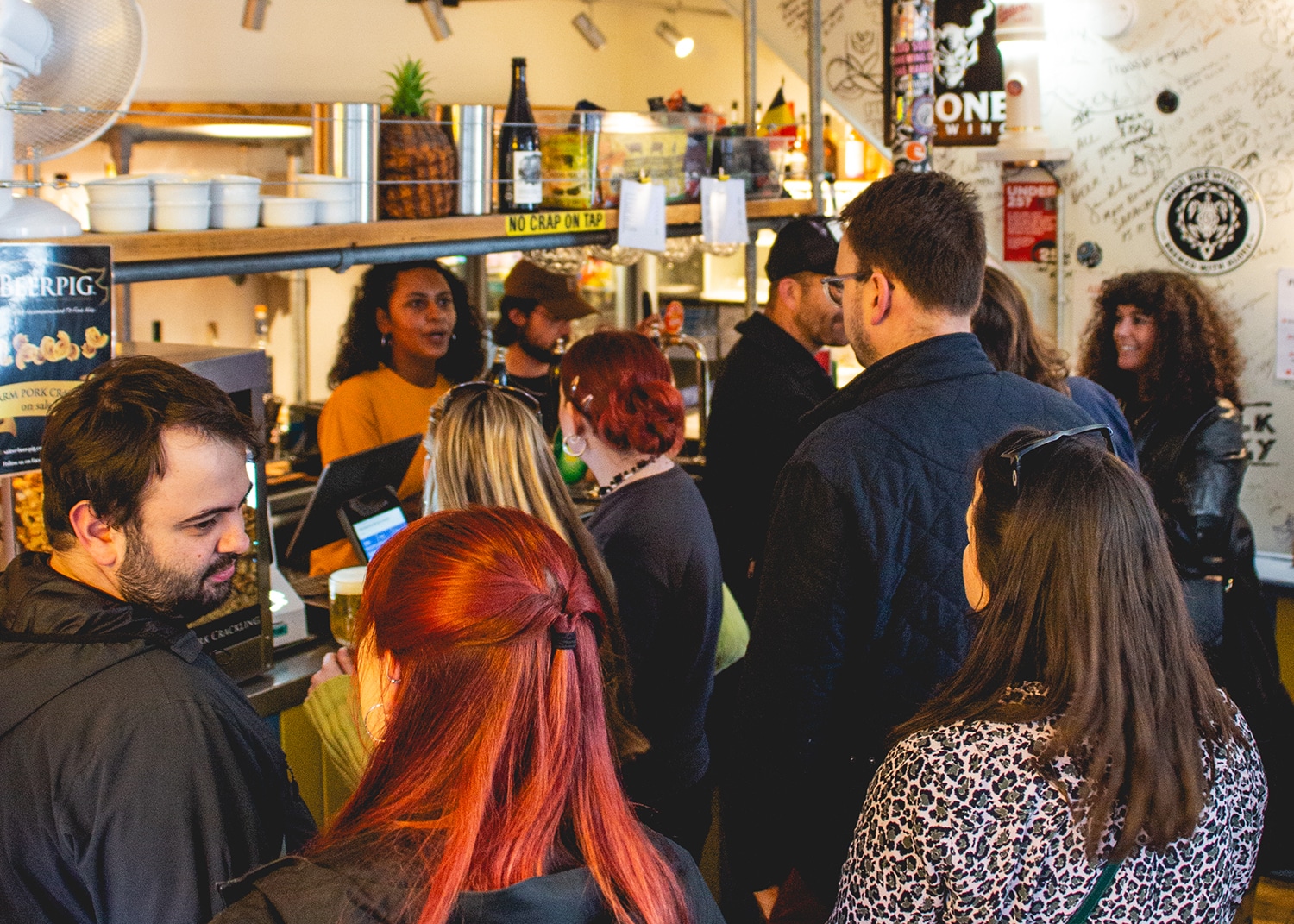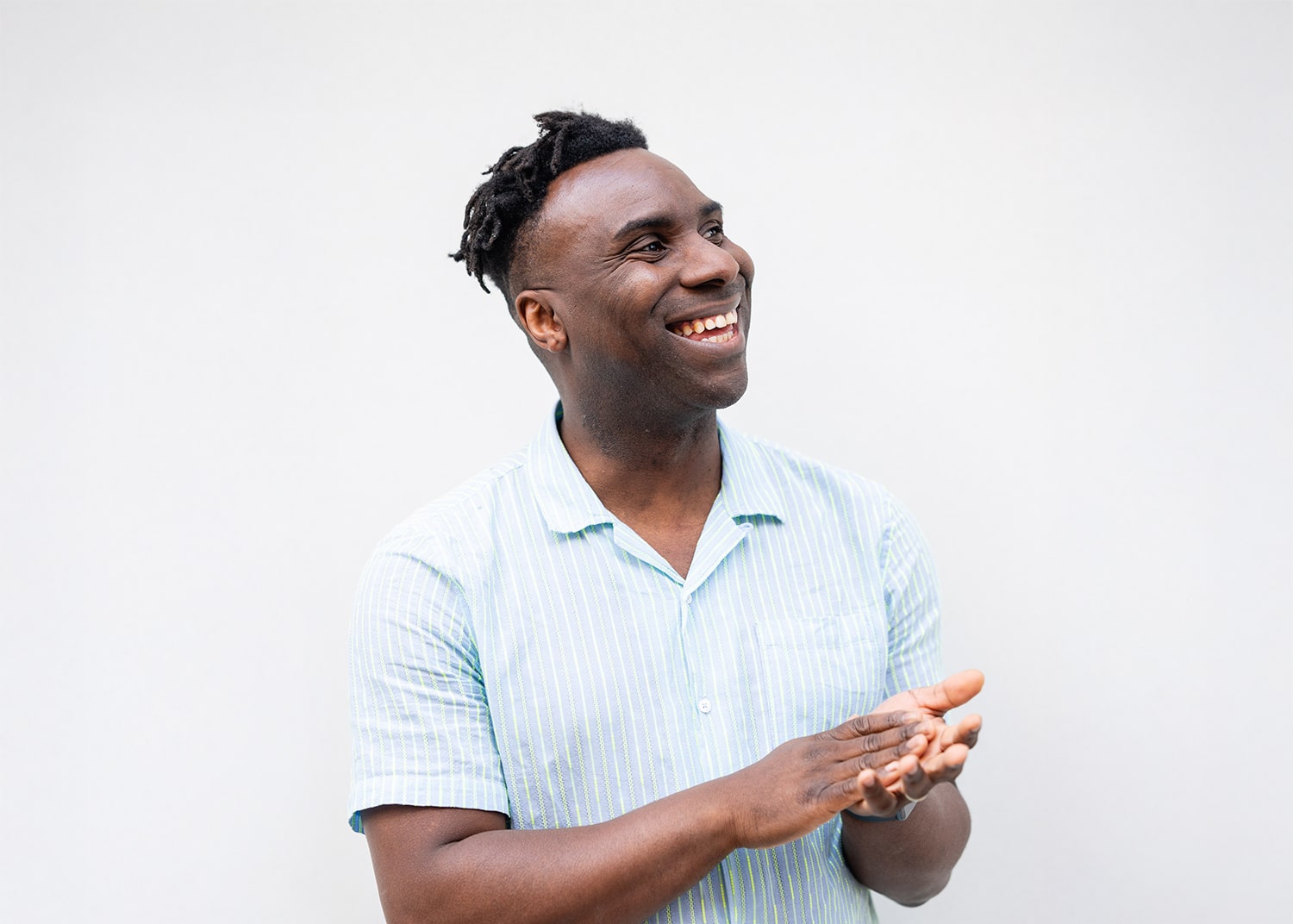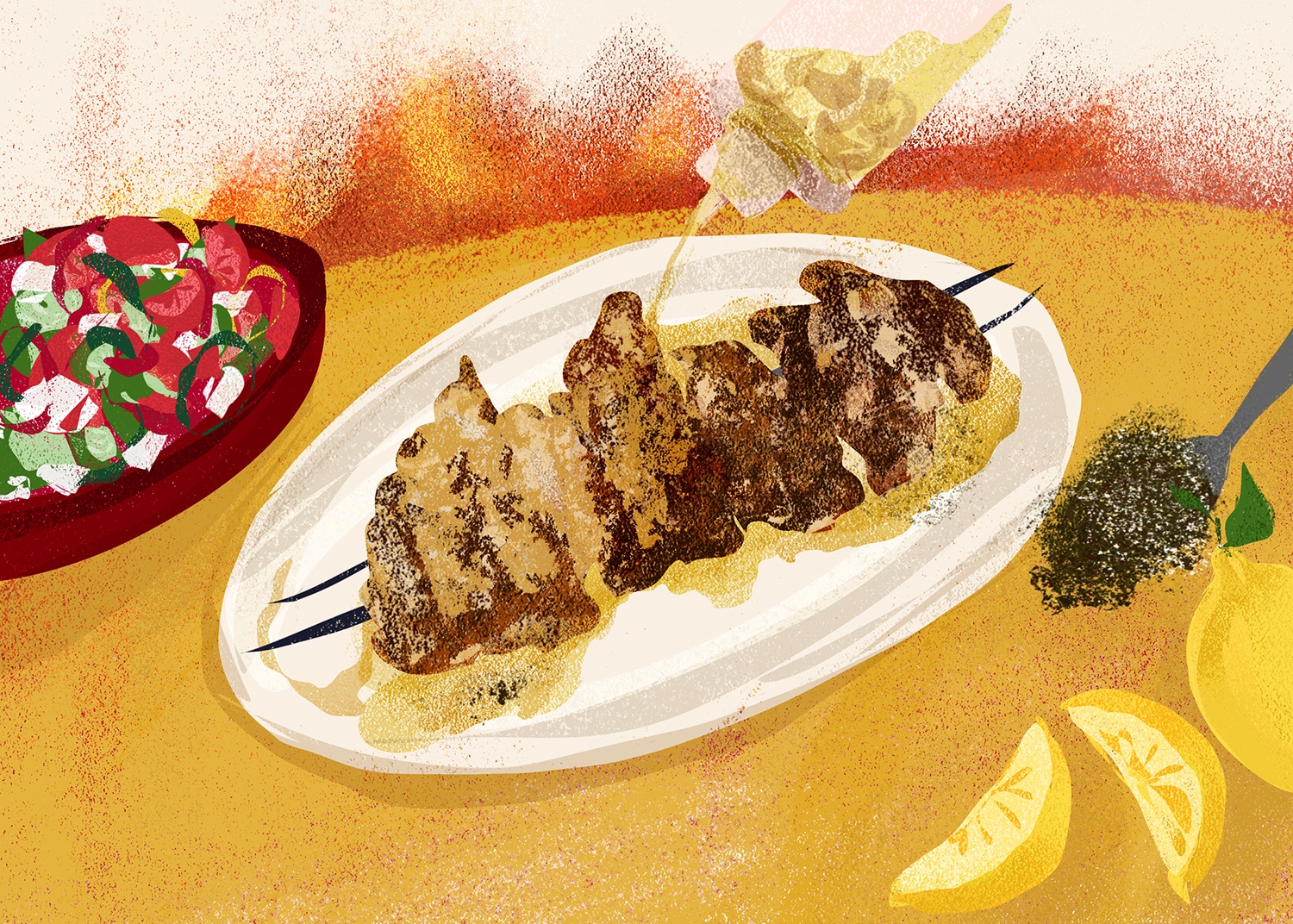Nick’s jambalaya
Nick Willoughby, founder of The Black Pig, on his favourite fire-cooked dish
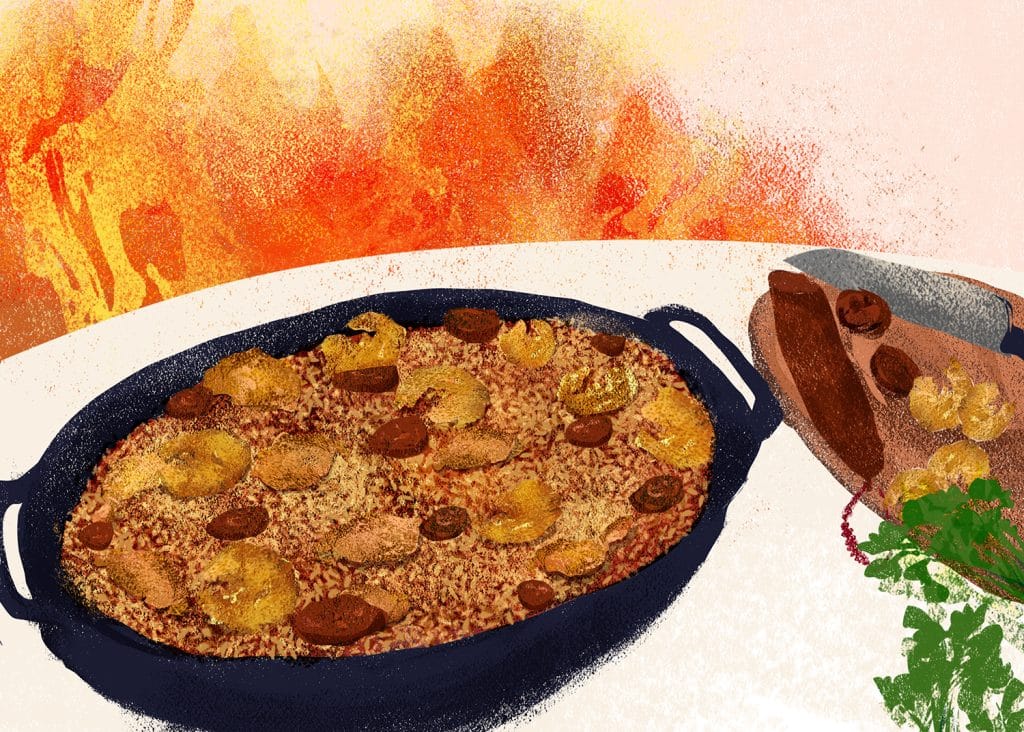

“YOU GET LOVELY CARAMELISATION IN THE PAN, BUT WITH ALL THAT EXTRA FLAVOUR THAT YOU COULD NEVER GET ON A HOB”
Interview: Mark Riddaway / Illustration: Megan St Clair
As barbecue season kicks into gear, some of Borough Market’s experts have been sharing the secrets of their favourite fire-cooked dishes. Nick Willoughby is the founder of The Black Pig, which sells its world-famous sandwiches in the Borough Market Kitchen. For these, slow-roasted pork is finished in the heat and smoke of a kamado barbecue before being piled generously into pillowy toasted ciabattas.
Nick, a fire-cooking obsessive, talked to us about the dish he most enjoys creating in his own back garden. “I’m passionate about Cajun and Creole cooking,” he says, “and my favourite dish to cook on the barbecue is a jambalaya.”
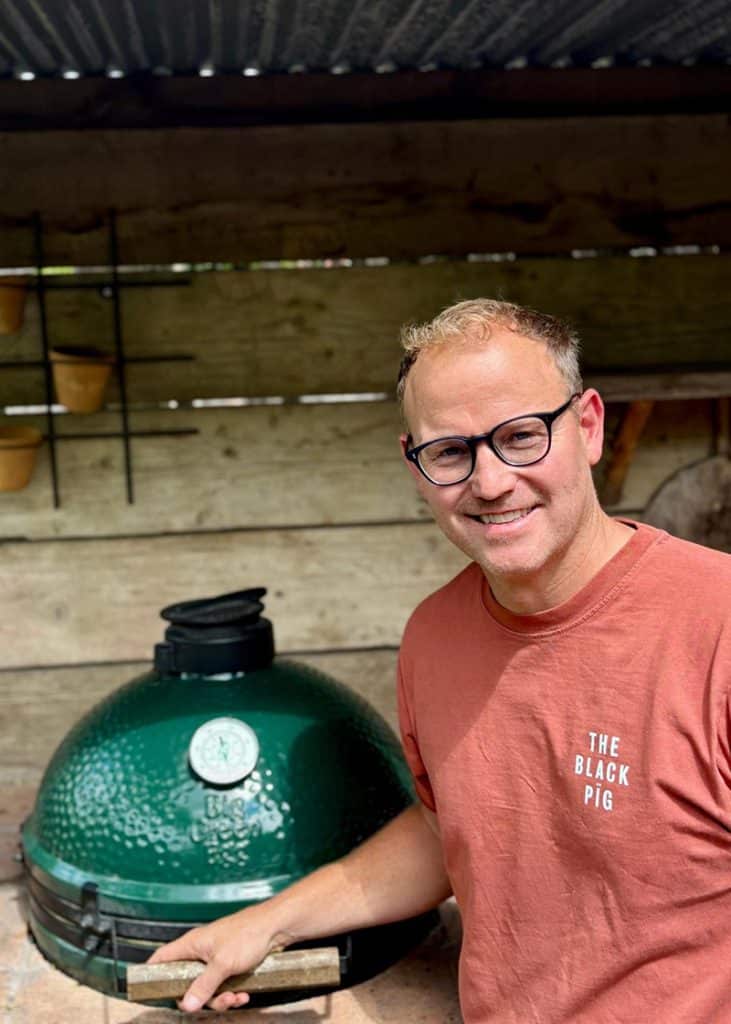
The dish
I sear all the main elements on the grill first – the andouille sausage (the American version, not the classic French one), the chicken, the shrimp – not to cook them all the way through, but to give them some real colour and flavour from the coals. In a paella pan on the barbecue, I cook down the Cajun ‘holy trinity’ of celery, green pepper and onion with some tomato paste, Cajun seasoning and Old Bay spice blend, then throw in long grain rice and chicken stock. Once that’s bubbling away, I add in the seared meat and seafood. For this to work, you need a barbecue with a lid that can close. Chuck in a few woodchips to create a bit more smoke, then leave it to cook through slowly. It smells amazing, tastes amazing, and you get these lovely gnarly caramelised bits around the sides. Stick it in the middle of the table and let everyone help themselves.
The inspiration
I used to live in the United States. I was an aspiring golf pro at the time, so I did a lot of travelling. I fell in love with New Orleans – I’ve been there many, many times. I love that it’s this melting pot of people and cultures. You’ve got that French influence, but also Spanish and Caribbean. That’s reflected in the food: you’ve got these amazing recipes that use traditional French cooking techniques but are packed full of spice and flavour.
The ingredients
The quality of ingredients is essential. I like to know that my food has been produced in the right way, with care and attention, which also results in better flavour. At The Black Pig, we use free-range Blythburgh pork – when you slow-cook it, it retains its structure and flavour, whereas mass-produced pork goes to mush and tastes of almost nothing. When I’m at home, it’s the same principle. If I’m going to use prawns in my jambalaya, I want prawns that taste like they’ve come from the sea. I want chicken with real depth. Borough is where I come to do my shopping – and I’m not just saying that because I’m a trader. I love coming early in the morning at the weekend. I bring the kids down. We go to the fish stands and to Spice Mountain, which is just amazing. If I’m trying to cook something interesting, it has everything I need.
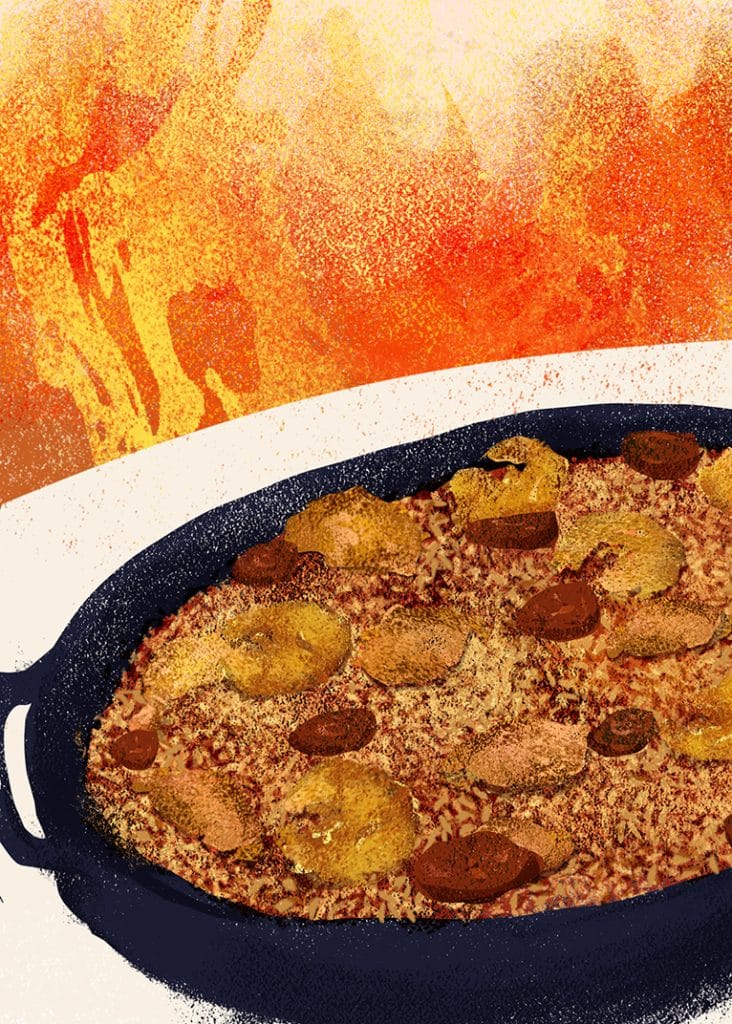
The method
People in Britain rarely use pans on a barbecue, but it’s such a great thing to do. It really struck me when I went on holiday to Carriacou, a little island off Grenada. We were at this beach barbecue where there was a guy cooking fish with a simple tomato and red pepper sauce. He had the sauce on a pan on the barbecue, and because of the smoke that was slowly seeping in, the flavour packed into it was unbelievable. You can draw so much heat from a barbecue, so you can get that lovely caramelisation in the pan, but with all that extra flavour that you could never get on a hob.
The fuel
Fuel is really important. If I’m cooking on my own and I’ve got lots of time, I love cooking with logs, but next best thing is lumpwood charcoal. It’s basically big old chunks of burnt wood, whereas the stuff you get from a petrol station is like dust in a bag. A few woodchips in with the coals can be good too. At The Black Pig we throw in some apple woodchips, and that gives our pork a blast of extra smoke when we finish it on the barbecue.
The appeal
I barbecue at home throughout the year, probably two or three times a week. I love the flavour that comes off the barbecue, and I love how involved it is. I hate baking, I can’t deal with fixed parameters, but with a barbecue you’re really connected to what you’re doing. It creates atmosphere, it draws everyone outside, it’s social. I’m not much of a person for plated dishes – I like doing food for the table for people to share, creating that environment where everyone’s sitting together, chatting. Also, I love getting my kids involved in food, and they’re instantly drawn to the barbecue, which is brilliant.
The pro tip
Control the temperature. A lot of people get their barbecue super-hot and just use it to blister sausages, but it can be so much more versatile than that. You can slow cook, you can pan cook. Just think about what it is you’re cooking and set the heat accordingly. If you’re cooking a steak indoors, you’ll get the frying pan really hot. Do the same outdoors: load up your barbecue, get it blisteringly hot and really give the steak some serious colour. But if you’re roasting a chicken in your oven, you don’t do it at 300C, so for chicken just put a few coals in and get it to about 160C.
